Contemporary kindergartens and nurseries seek to create a space that facilitates independent learning through a playful and happy environment where children can engage in interactive learning experiences. Architects choose to deliberately bring an inspirational aspect into the design thinking of spaces meant for little ones.
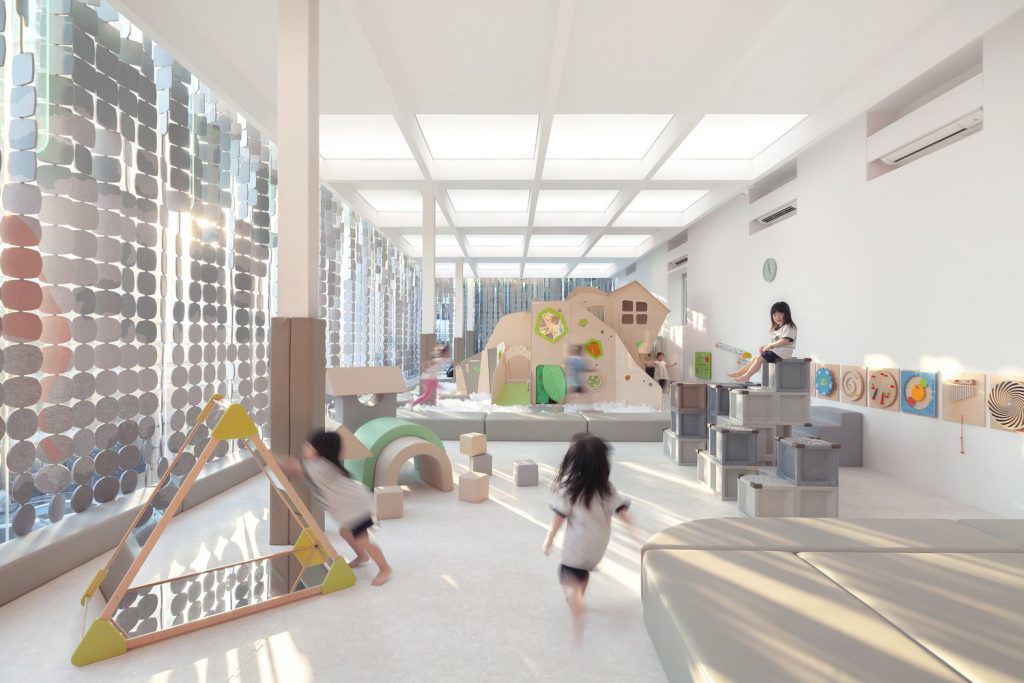
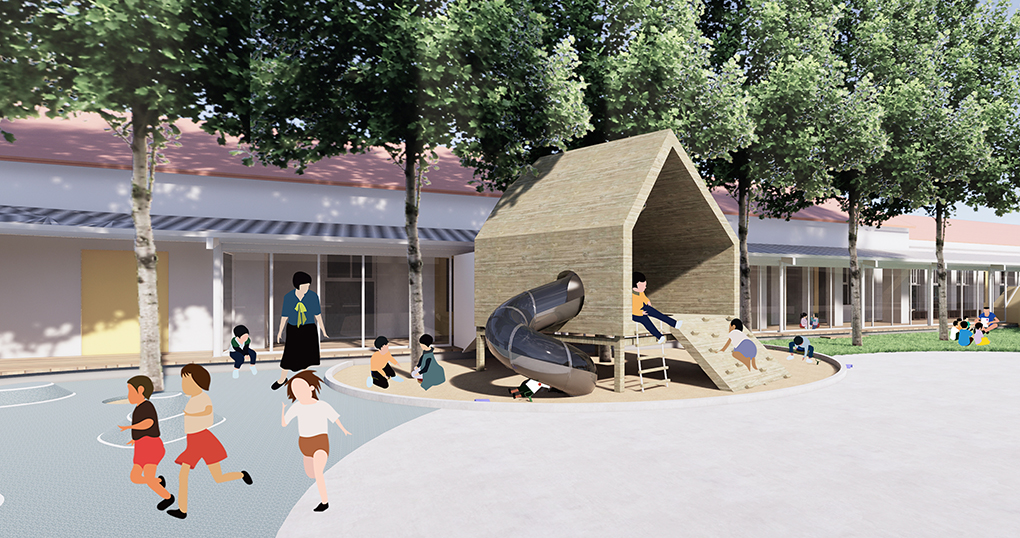
Sunshine Kindergraten by People’s Architecture Office
Beijing-based People’s Architecture Office (PAO), a multi-disciplinary team of architects, engineers, product designers and urbanists, has redesigned Sunshine Kindergraten in Cangzhou, China. Founded in 2004 as an adopter of the STEAM curriculum, the kindergarten faces a problem of the current campus failing to meet teaching needs.
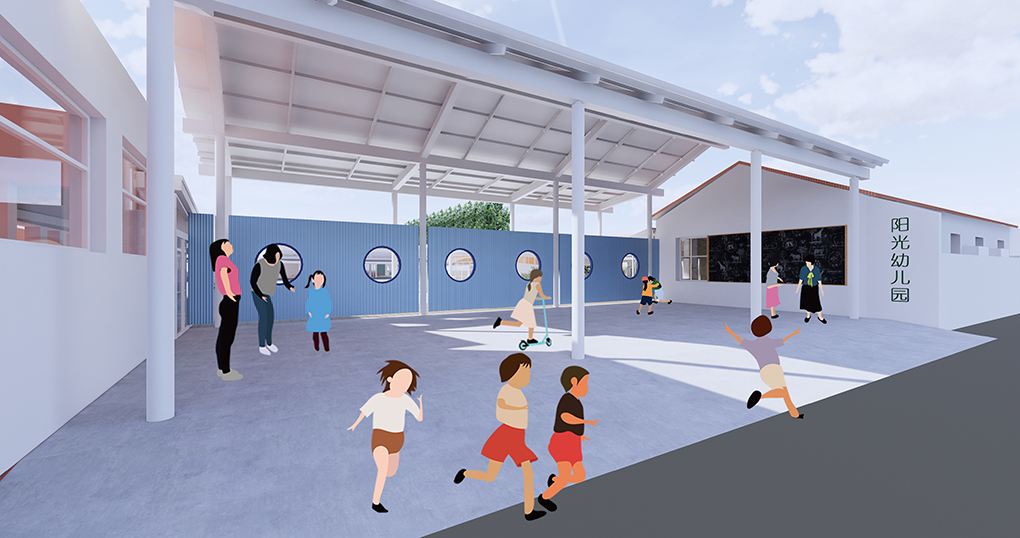
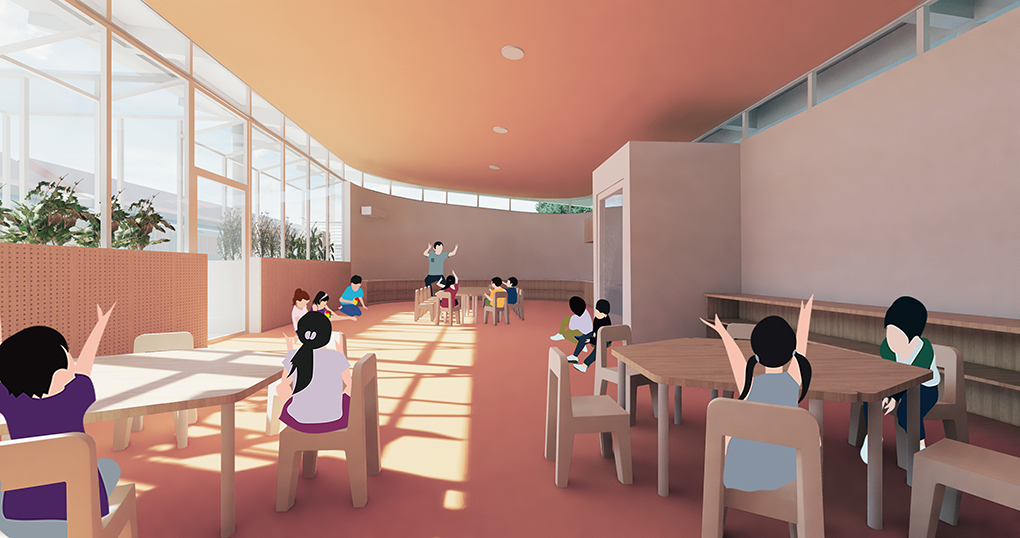
Sunshine Kindergraten by People’s Architecture Office
Aiming to meet the standards of STEAM which is not only a teaching methodology but also a space design concept demanding innovative and flexible learning spaces, the team has developed a floorplan with exposed structures, pipelines and materials that teach children about the sustainable principles of the building. All teaching facilities are interconnected by flexible partitions, while interactive facilities throughout the building stimulate children to explore their curiosity. Floor-to-ceiling windows and greenery have been introduced to emphasize contact with nature and the outdoors.
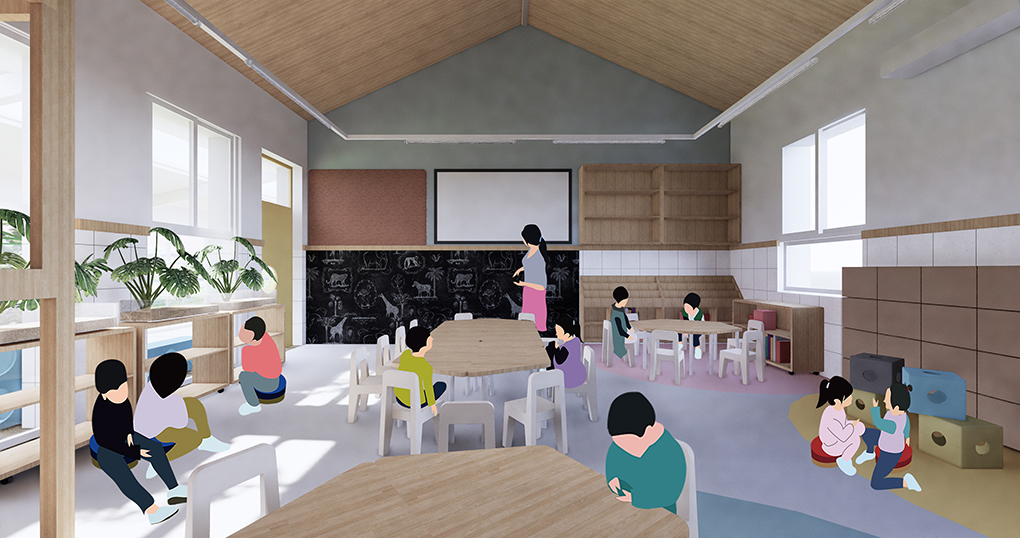
Sunshine Kindergraten by People’s Architecture Office
The new buildings include an entrance, a main hall and an experience room. The additions are arranged around a courtyard, leaving ample space for flexible use as an event site. At the same time, a new circular corridor is deployed to link the new buildings and the old, connecting all the teaching facilities together.
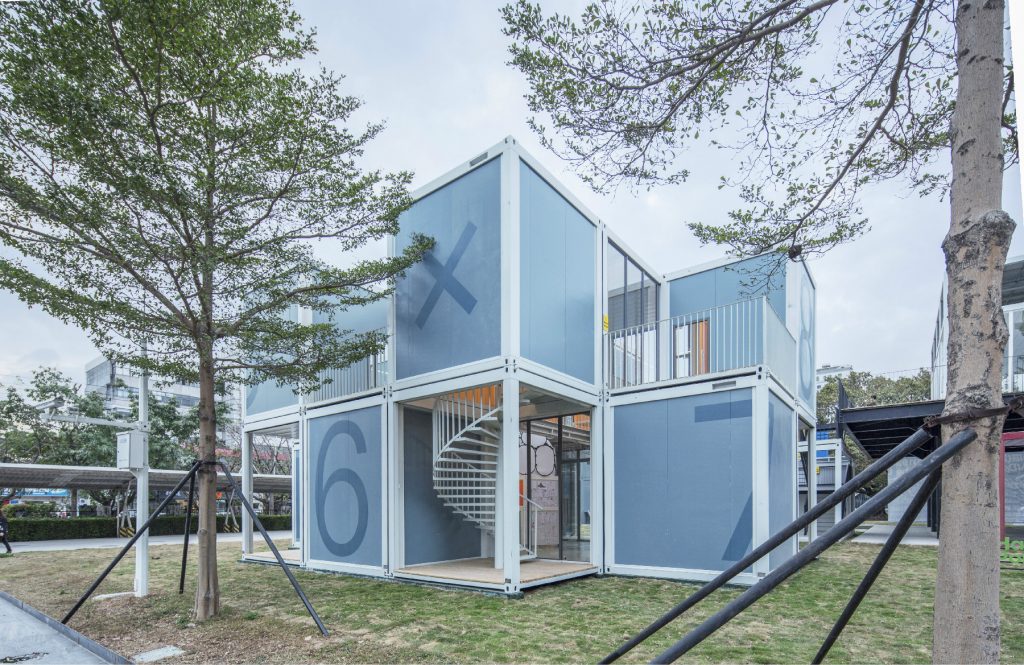
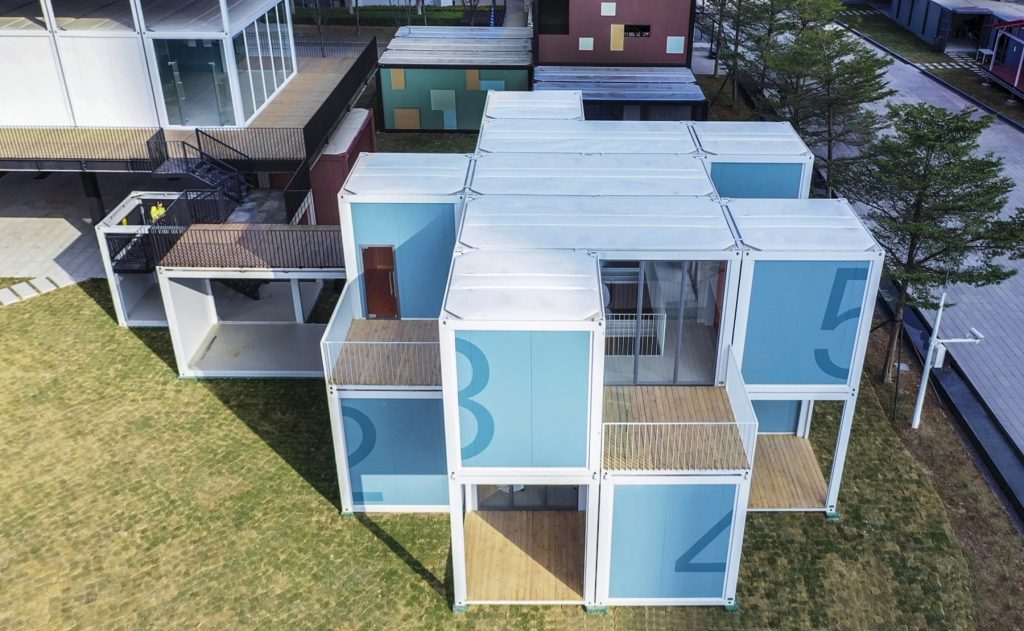
Plugin Learning Blox by People’s Architecture Office
PAO is also known for their Plugin Learning Blox pop-up school that helps alleviate the high demand for educational space in rapidly growing cities. The project encompasses several classrooms organized as project groups around a common area with educational activities meant to be held in the central public space where the community is invited to participate. The project classrooms serve as breakaway spaces for smaller group and individual learning. Its basic spatial structure has interchangeable elements that support learning through play.
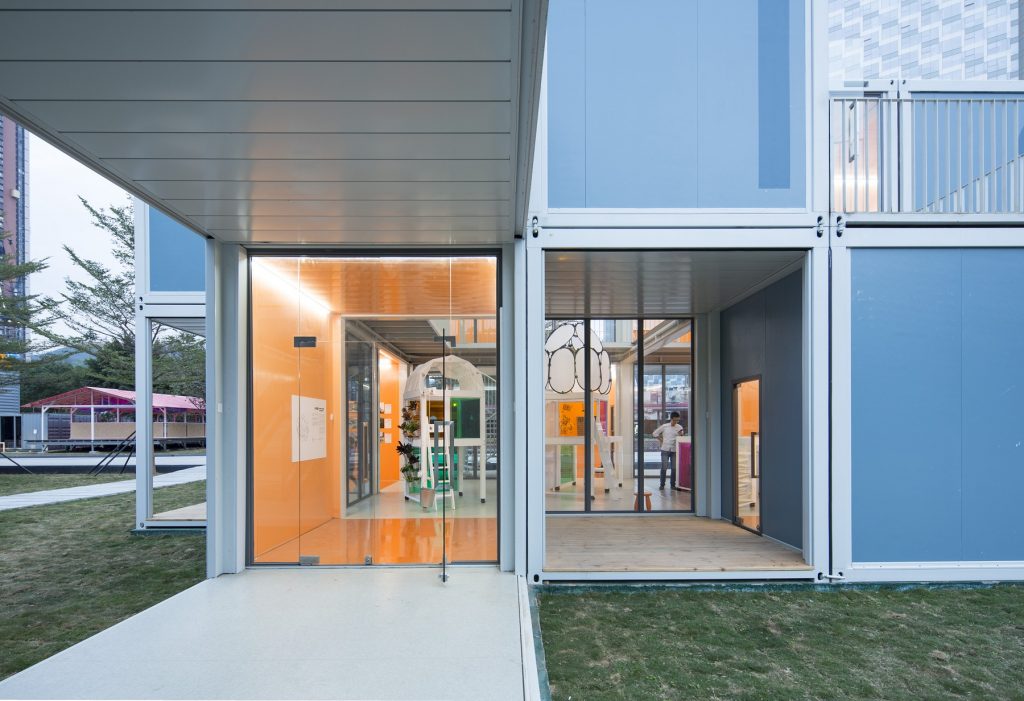
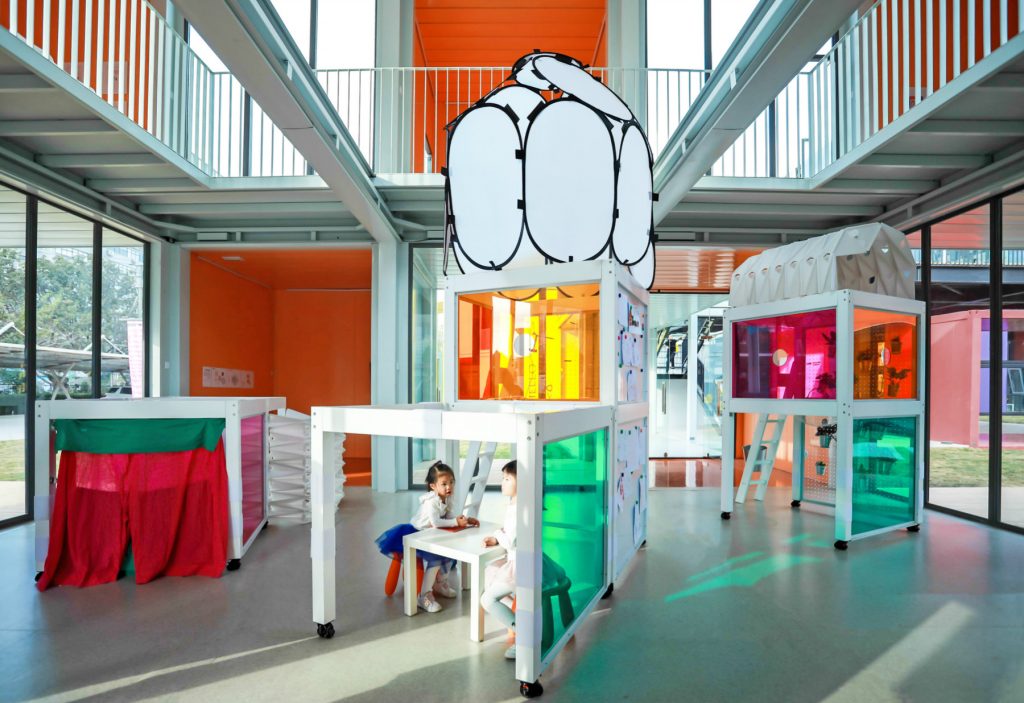
Plugin Learning Blox by People’s Architecture Office
The Plugin Learning Blox prototype was presented as part of The Popup Campus organized by FuturePlus Academy for the 2019 Shenzhen-Hong Kong Bi-City Biennale of Architecture\Urbanism. The building uses the China Construction Science & Technology Company’s prefabricated building system, the same flat-pack modular system used to build a hospital in 10 days in Wuhan, which means it can be disassembled, relocated and reused. All the components were produced in a factory and the construction on site took 3 days.
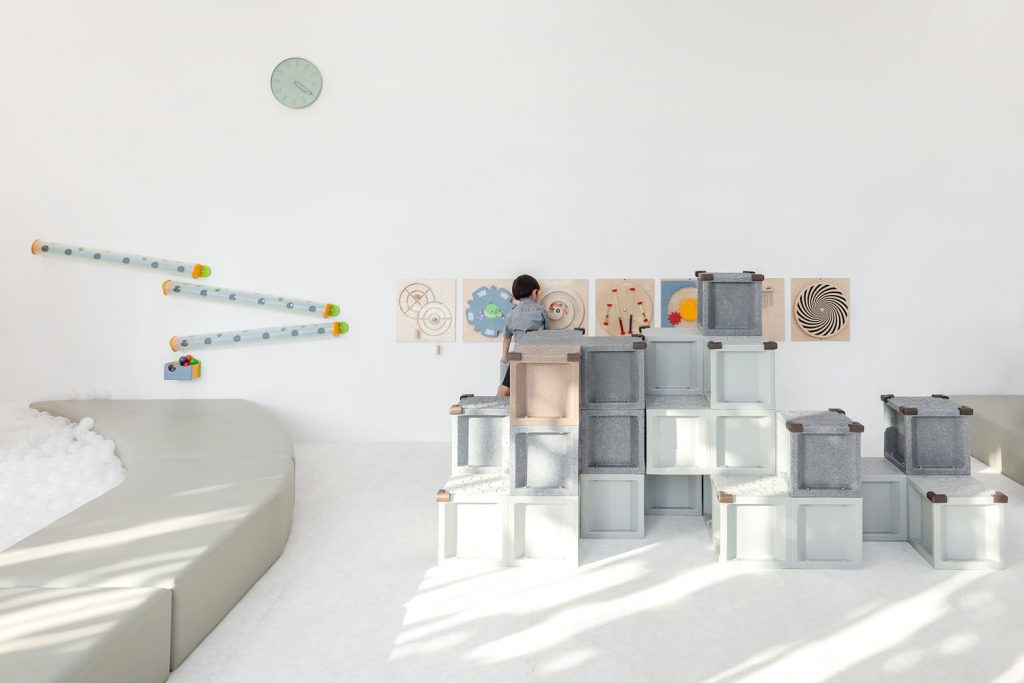
Playville by Nitaprow (also header image)
Playville is an indoor playground in Bangkok, Thailand designed by the local architecture practice Nitaprow. The space comprises four different environments, with various structures mimicking Nature’s geological diversity and encouraging crawlers and toddlers to walk, climb, dive, and crawl. In this way the playground offers children an unmatched opportunity to fully explore their physical and cognitive abilities.
According to the team, the integration of the natural environment in this sheltered and challenging playground may be subtle yet profound. It creates a rather unusual combination of serenity and thrill, an ideal condition for setting up curiosity and mindfulness at the time of great cognitive and social development.
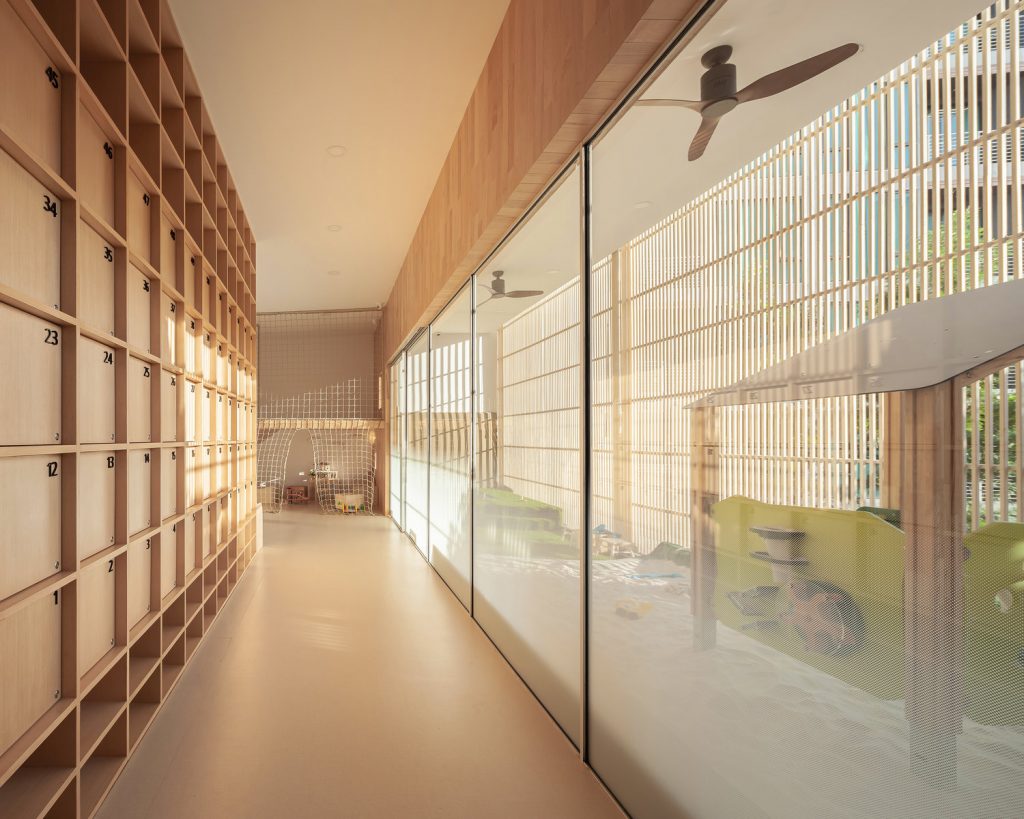
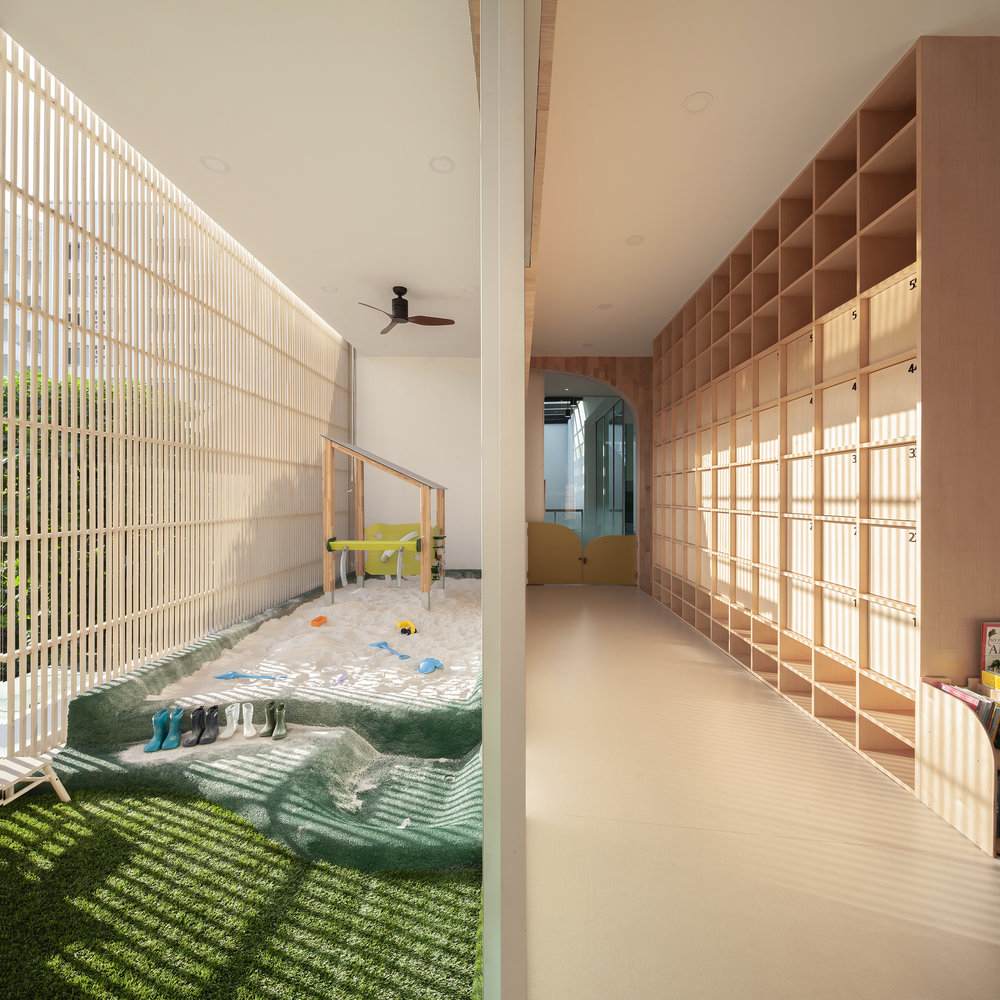
Playville by Nitaprow
Children access Playville via The Fog and the Tree Tunnel, an entrance hall clad with solid wooden planks forming a sort of a towering tunnel, while gradient film on the space’s glass wall creates a foggy and misty background. Hard flooring shifts to low-impact one as the little ones become physically charged with excitement while moving further into the play areas.
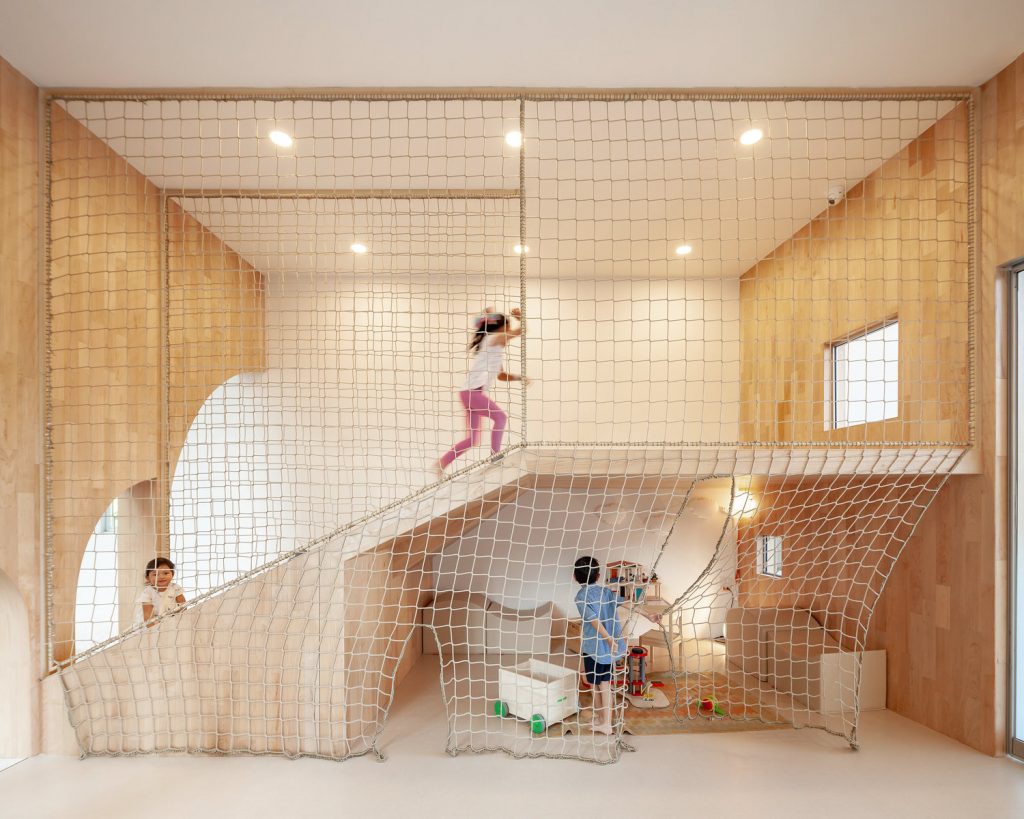
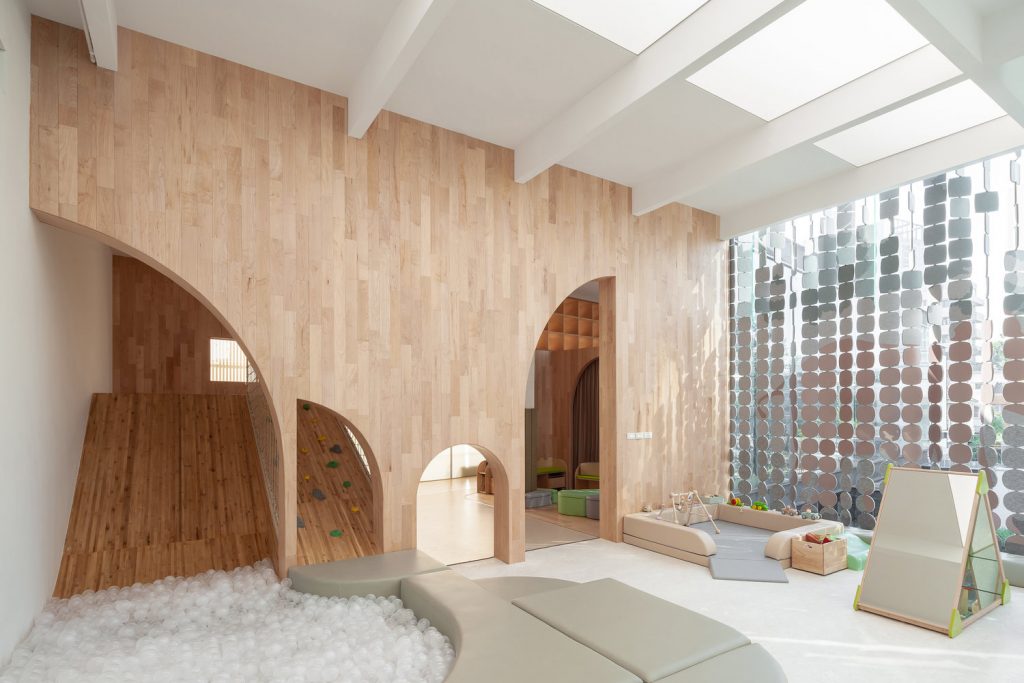
Playville by Nitaprow
The Transition hall, named The Hill & the Burrow, comprises a raised wooden platform delineated by transparent safety net. It creates an elevated terrain for climbing and sliding while forming an intimate hideaway beneath it. The elevated terrain is physically connected to the main play area with two wooden arched portals at one end, while it is visually connected to the covered outdoor zone at the other. The latter is titled The Dune & the Oasis and is placed along the east-facing façade. Here, children can play in the sand or jump on the grass covered trampoline.
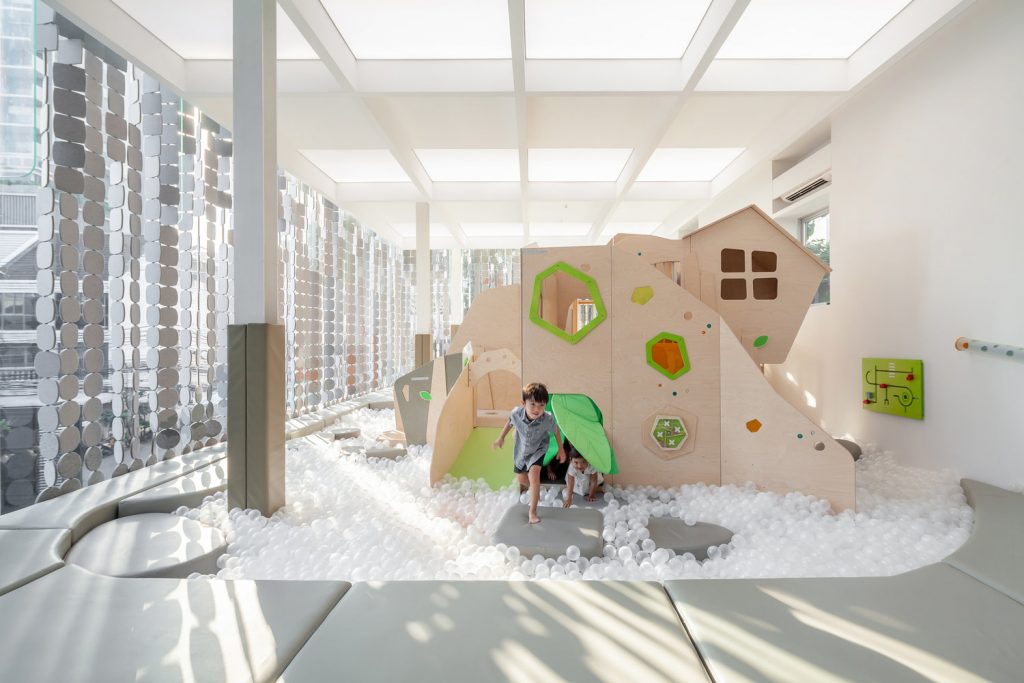
Playville by Nitaprow
In the main play area, The Island & the Lakes, an emphasis is placed on creating continuous circulation loops around the playhouse and the island. Pieces of custom foam block come together to form topographically inspired balls pit filled with thousands of translucent balls chosen by the team as the most applicable substitution for an actual water mass. Natural light plays one of the most important role in this part of the design concept. Multiple skylight planes are placed evenly throughout the area to resemble the natural lighting from the sky above.

Playville by Nitaprow
As most of the exterior walls face the strong southern and western sunlight, large glass facades were shielded by a system of floor-ceiling felt screen composed of pixels that transition from squares at the top to circles at the bottom. The units also reduce the solar heat gain and enhance the acoustic performance of the indoor playground. The images of the natural landscape and wild creatures are printed on each unit as part of the bigger picture challenging the viewers to take a step back, as the big picture would only become clearer with the right distance and perspective.
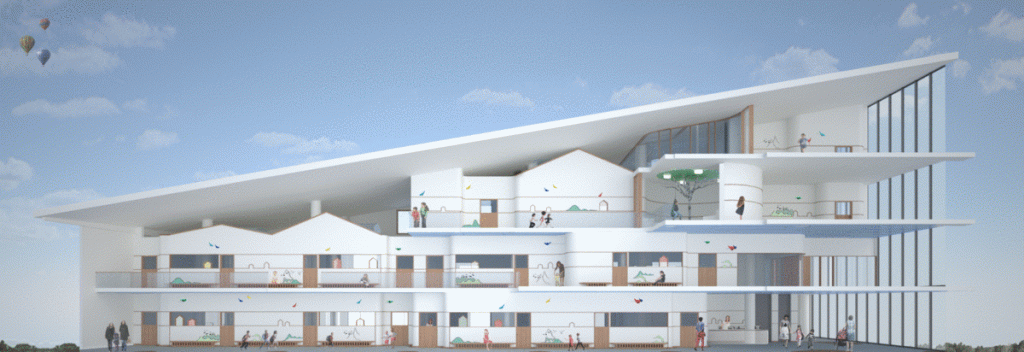
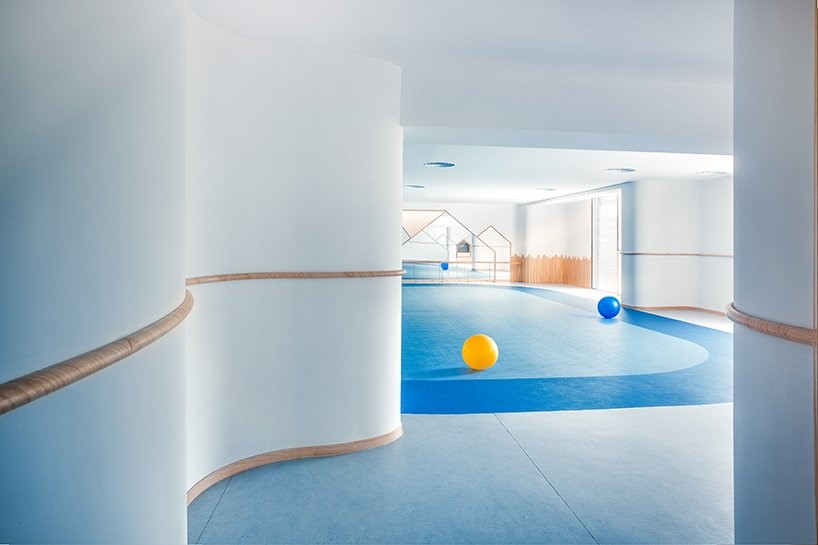
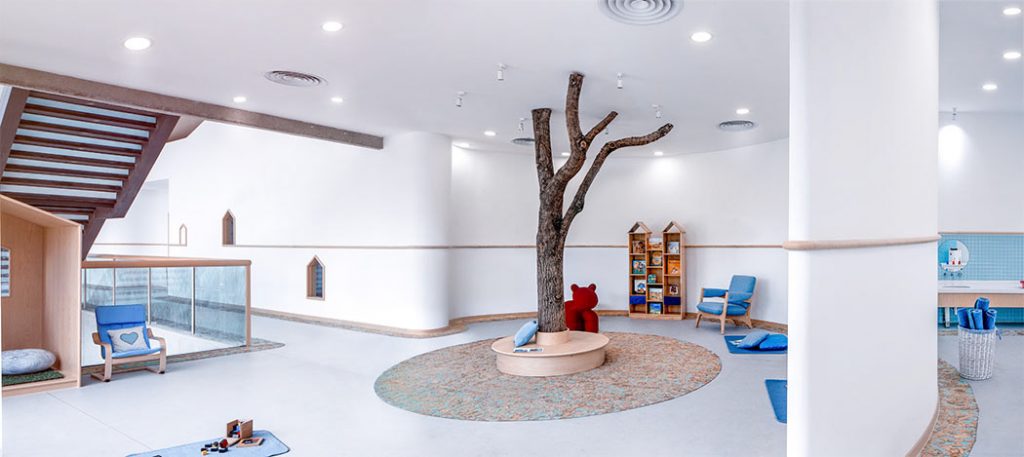
Beijing Peninsula Kindergarten by ArkA design
ArkA design, a group of architects and interior designers from different countries including China, Italy, and Colombia, has completed the Beijing Peninsula Kindergarten in China. It is their second project with Peninsula Education Group that aims to combine Montessori learning techniques with architecture. The Montessori kindergarten intends to serve as a community where children and adults can engage in interactive learning experiences.
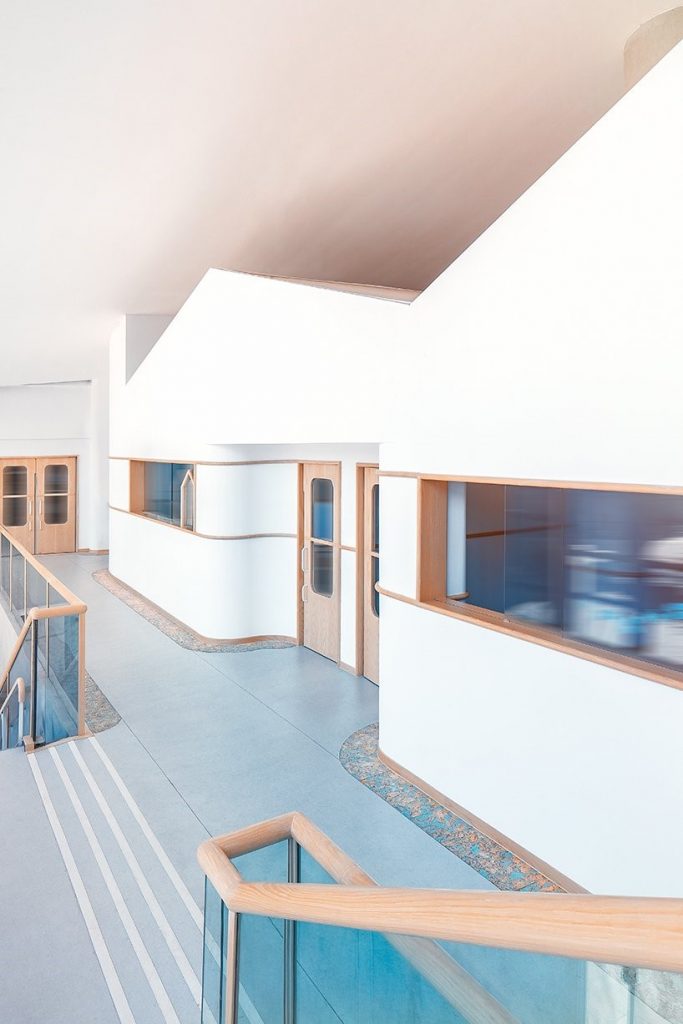
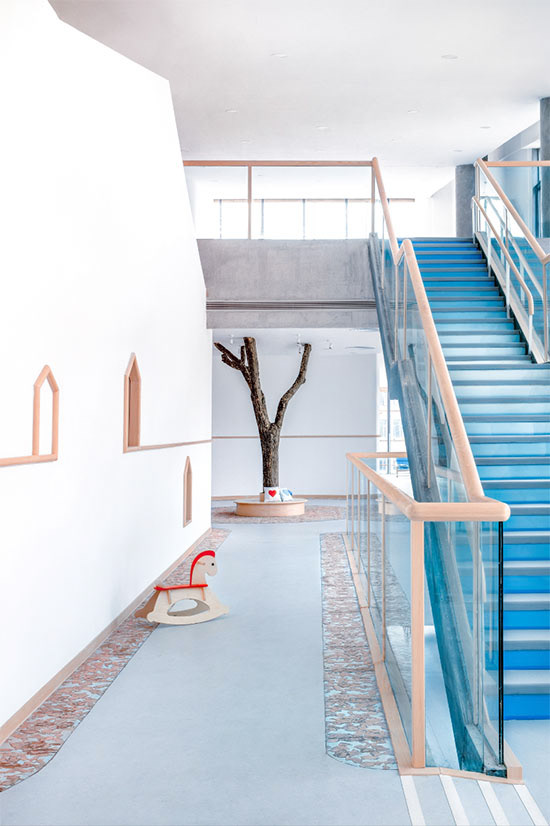
Beijing Peninsula Kindergarten by ArkA design
Commissioned to transform the original office building into a space proportioned for children, the team has introduced a number of small houses that provide the little ones with a sense of safety. The little houses and a big blue staircase connecting every floor create the image of a village built along the river. A tree planted in the centre of the open area enhances resemblance with the main square of a rural town. Thanks to a multifunctional open space formed by corridors, children can move around and play freely, with teachers supervising them. The doors are designed to be easy and safe so that younger kids can use them without worrying about sharp corners.
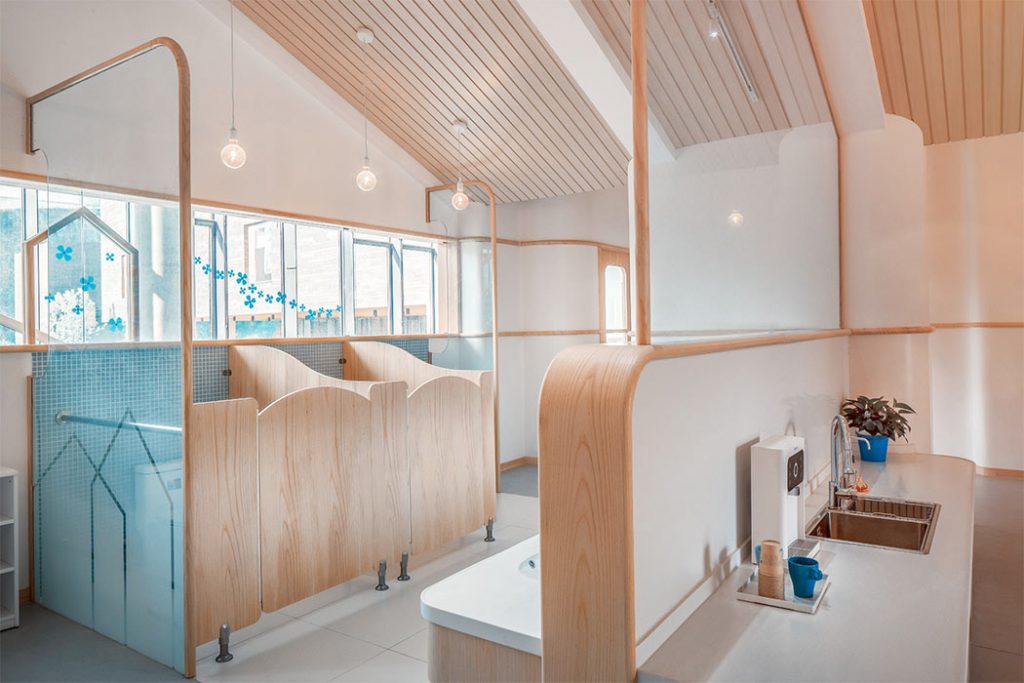
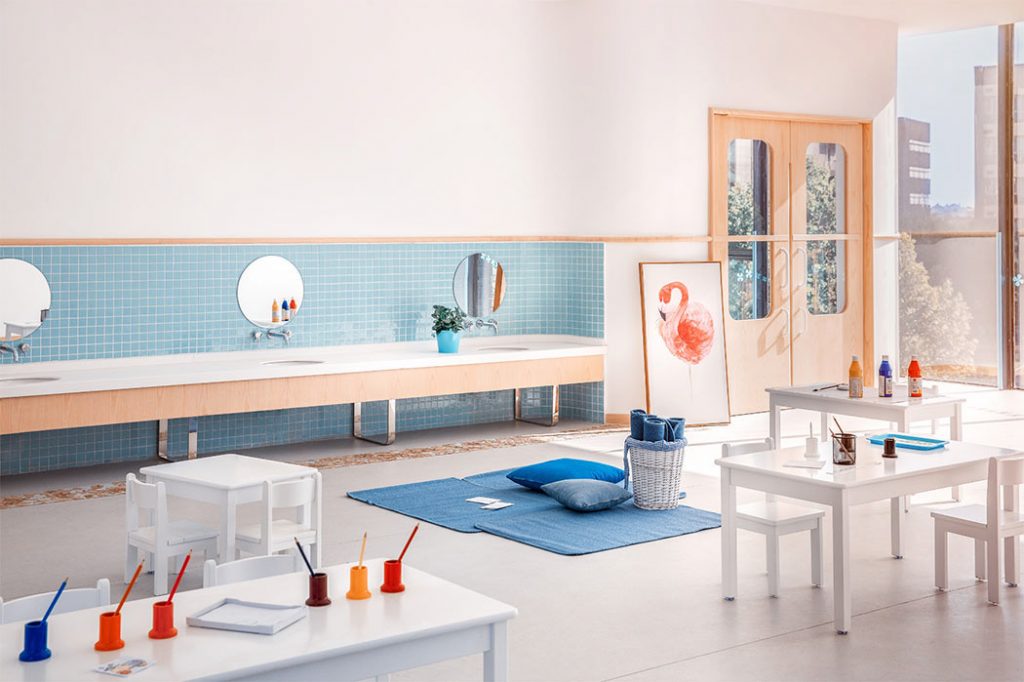
Beijing Peninsula Kindergarten by ArkA design
Read more about creative kindergartens here